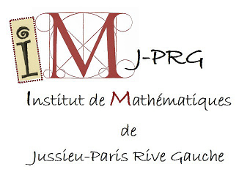| Résume | Barbara Sattler (Abstract) : This talk will compare the understanding of apeiron – the term we usually translate as “infinite – in Zeno, Aristotle, and Euclid. Scholars do not agree on whether apeiron originally means “boundless” or “untraversable”. I will suggest that we should understand it as a first pass in Zeno’s time as “unquantifiable”. Zeno will be shown to use this idea in four different ways in his paradoxes, all of which demonstrate it to be a problematic notion: for magnitudes of unlimited size, for unlimited multitudes; in the sense of infinite divisibility; and in the sense of endless logical repetition. While Euclid also talks about unlimited magnitudes and multitudes, the big difference to Zeno is that he employs this unlimitlessness in a positive sense: for Euclid there exist infinitely many commensurable and incommensurable straight lines (Elements, X, Def. 3), and lines can be assumed to be produced to infinity (e.g., in I, 29 where extending them ad infinitum is required in order to show that they would meet, if they were not parallels). By contrast, for Zeno an apeiron multitude is such that there is always one further than any number we have reached so that a seemingly quantifiable multitude can after all not be quantified and having to assume a magnitude of unlimited size is one point leading into a paradox in B1. But both Zeno and Euclid, interestingly, do not used any talk of apeiron for temporal infinity: in order to indicate the temporal aspect of a process (that a process continues without temporal limit) Zeno uses the word aei (“always”) instead. And also Euclid does not use the term apeiron for temporal infinity; in his so-called method of exhaustion he talks about the always (aei) continuing subtraction of a magnitude from a greater magnitude (XII, 2; cf. also X, 1 und 2).Using the same term apeiron for a time is something we find, however, in Aristotle, who in Physics III gives us the first systematic investigation of what being apeiron means. And he shows that time and motion can be understood to be apeiron in the very same way a magnitude is. We will have to investigate why this is not taken up by Euclid and whether it is related to the notion of continuity (being syneches) which, while central for mathematics, is strangely not defined and little found in Euclid.
Sabine Rommevaux-Tani (CNRS) : Le De continuo de Thomas Bradwardine, un panorama des différentes positions sur la composition du continu au XIVe siècle.
Résumé: Dans un traité entièrement consacré au continu, Thomas Bradwardine, célèbre maître es arts à l'université d'Oxford, reprend et critique les différentes théories concernant la composition du continu en atomes, qui étaient débattues au XIVe siècle. Nous verrons comment il compose son traité, sur le modèle des Eléments d'Euclide. Nous nous demanderons s'il s'agit d'un traité de mathématiques ou de philosophie naturelle. |

